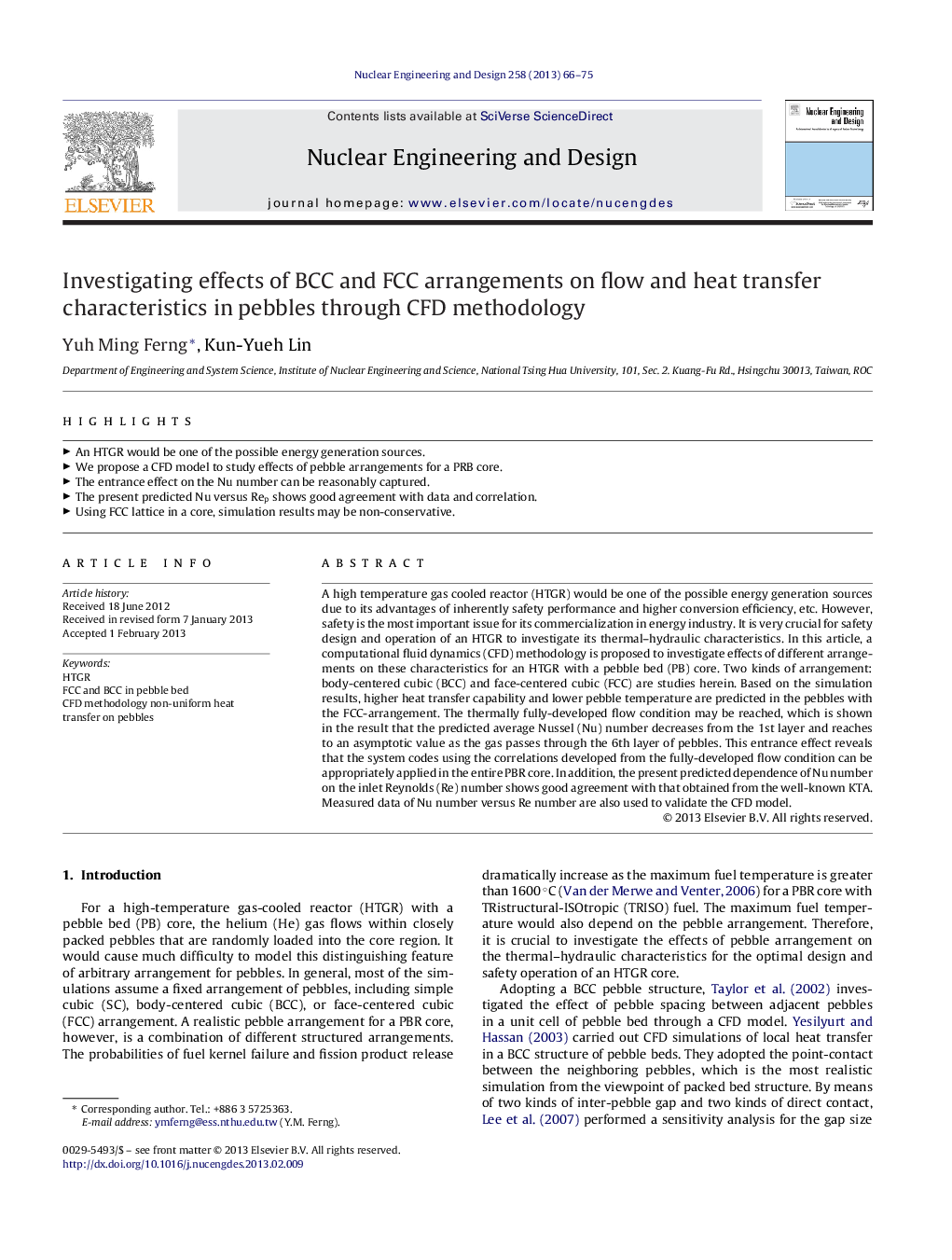| Article ID | Journal | Published Year | Pages | File Type |
|---|---|---|---|---|
| 296764 | Nuclear Engineering and Design | 2013 | 10 Pages |
A high temperature gas cooled reactor (HTGR) would be one of the possible energy generation sources due to its advantages of inherently safety performance and higher conversion efficiency, etc. However, safety is the most important issue for its commercialization in energy industry. It is very crucial for safety design and operation of an HTGR to investigate its thermal–hydraulic characteristics. In this article, a computational fluid dynamics (CFD) methodology is proposed to investigate effects of different arrangements on these characteristics for an HTGR with a pebble bed (PB) core. Two kinds of arrangement: body-centered cubic (BCC) and face-centered cubic (FCC) are studies herein. Based on the simulation results, higher heat transfer capability and lower pebble temperature are predicted in the pebbles with the FCC-arrangement. The thermally fully-developed flow condition may be reached, which is shown in the result that the predicted average Nussel (Nu) number decreases from the 1st layer and reaches to an asymptotic value as the gas passes through the 6th layer of pebbles. This entrance effect reveals that the system codes using the correlations developed from the fully-developed flow condition can be appropriately applied in the entire PBR core. In addition, the present predicted dependence of Nu number on the inlet Reynolds (Re) number shows good agreement with that obtained from the well-known KTA. Measured data of Nu number versus Re number are also used to validate the CFD model.
► An HTGR would be one of the possible energy generation sources. ► We propose a CFD model to study effects of pebble arrangements for a PRB core. ► The entrance effect on the Nu number can be reasonably captured. ► The present predicted Nu versus Rep shows good agreement with data and correlation. ► Using FCC lattice in a core, simulation results may be non-conservative.
